Carpobrotus mellei
Carpobrotus mellei (L.Bolus) L.Bolus
Family: Aizoaceae
Common names: mountain sourfig (Eng.), bergsuurvy (Afr.)
Introduction
The mountain sourfig is a mat-forming leaf succulent from the mountains in the Western Cape. The leaves are ascending and slightly glaucous, the flowers pink with stigmas that overtop the stamens, and the fruits are club-shaped and edible when ripe. Easily propagated by cuttings and best for fynbos gardens, planted on embankments.
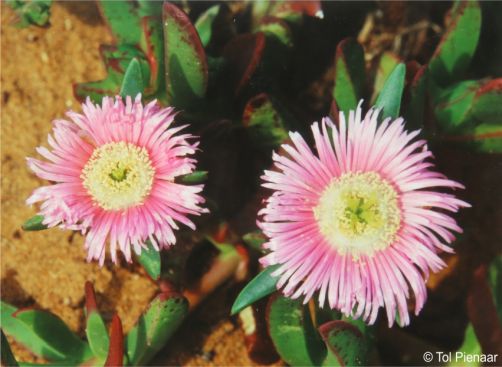
Fig. 1. Carpobrotus mellei in flower. Note the long greenish yellow stigmas (female part) overtopping the yellow stamens (male part), this is a diagnostic feature immediately separating it from other species of Carpobrotus. (Photo: Tol Pienaar)
Description
Description
Procumbent, mat-forming, hairless (glabrous), densely branched succulents with stems 1-1.5 m long and with branches 10-15 mm diameter and biconvex. The roots are fibrous. The branches are maroon-red when young due to the pigment betanin, angular, remaining procumbent, becoming greyish brown as they mature. Shorter ascending flowering shoots appear from the leaf axils. The leaves are fleshy, bluish-green (slightly glaucous), 3-angled (trigonous), usually with a reddish margin, almost sickle-shaped to nearly straight, laterally flattened, 60-110 x 8-18 mm with a distinct keel serrated towards the tip. The nodes about 13–25 mm apart and with a smooth surface. The leaf surface is smooth, the leaf tip acute, and bearing a prominent little point (mucro). The flowers are solitary, 50-80 mm in diameter, pointing upwards, the flower stalks (pedicels) about 30-90 mm long with two bracts; sepals 5, unequal 12-20 mm long. The flower petals in 3-4 series, linear, pink to purplish-pink, 18-32 x 1-2 mm. The filaments in 3-5 series, pale pink or whitish, 6-8 mm long. The anthers pale yellow. The stigmas 9-13 mm long, yellowish green, awl shaped, much longer than the stamens. The fruits are club-shaped, 24-30 mm long, 20-28 mm in diameter. Seeds very small, embedded in the mucilage. Flowering is mainly in spring (September to November).
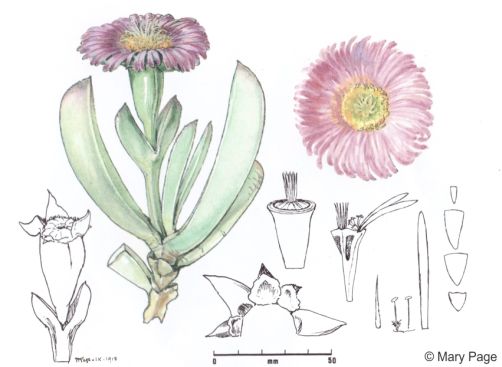
Fig. 2. An illustration of Carpobrotus mellei by Mary Page.
Conservation Status
Status
Carpobrotus mellei is range restricted but not rare or threatened, and is assessed as Least Concern (LC) by the Red List of South African Plants.
Distribution and habitat
Distribution description
Capobrotus mellei is a South African endemic from the mountainous, south-eastern part of the Western Cape, and is confined to the Cape Folded Mountains (Witteberg Group) between Robertson and Worcester, growing at altitudes of 750-1 500 m above sea level. Its distribution extends eastwards to the Groot Swartberg. Plants are locally abundant growing in Robertson Karoo vegetation (Rainshadow Valley Karoo of the Succulent Karoo Biome) as well as Breede Quartzite Fynbos. Rainfall usually occurs in winter from frontal systems and sometimes as convectional rain in autumn and spring. Rainfall is estimated between 400-500 mm per annum.
The author has found it on the Droeriviersberg, Gannaberg, Gemsbokkop, Hamansberg, Ouhangsberg and the Rooiberg (Robertson). On these mountain peaks plants grow in dry Quartzite Fynbos in hilly and rocky mountainous areas (Mucina et al. 2006). On Droeriviersberg Carpobrotus mellei shares its habitat with the bietou (Osteospermum moniliferum), gonnabos (Passerina corymbosa), blombos (Metalasia densa), sourfig (Carpobrotus edulis) and bergplakkie (Crassula nudicaulis). The geology consists of mineral-poor, sandy soil derived from Witteberg Quartiztic Sandstone (Cape Supergroup). On Gannaberg, the plants grow among ghwarrie (Euclea undulata), Karoo num-num (Carissa haematocarpa), klipkershout (Maytenus oleoides), Gymnosporia sp., finkel (Anginon sp.), Protea lorifolia, sugarbush (Protea repens), Leucadendron teretifolium, Leucospermum royenifolium, Leucospermum cuneiforme, Lobostemon echinoides, renosterbos (Dicerothamnus rhinocerotis), Galenia africana, kerriebos (Helichrysum excisum), Merxmuellera stricta, Pentaschistis eriostoma and Restio sieberi. Succulents include botterboom (Tylecodon paniculatus), nentabos (Adromischus caryophyllaceus), Adromischus filicaulis subsp. marlothii and bontplakkie (Adromischus maculatus), Crassula atropurpurea var. rubella, Crassula nudicaulis, sosaties (Crassula rupestris), Crassula cotyledonis, Drosanthemum parvifolium, bergvygie (Drosanthemum speciosum), Mesembryanthemum longistylum, Ruschia caroli and Stayneria neilii.
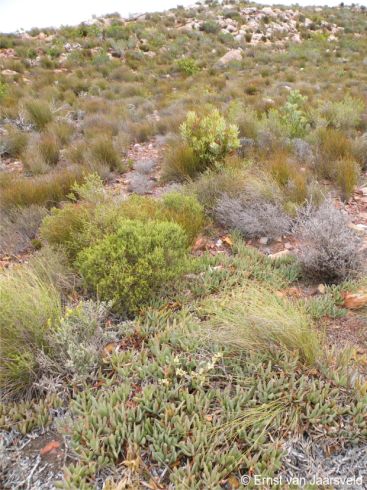
Fig. 3. Carpobrotus mellei in its Breede Quartzite Fynbos habitat on Gannaberg, Robertson, with Protea lorifolia in the background.
Derivation of name and historical aspects
History
Carpobrotus mellei was collected near Robertson in 1914 by Henry Melle (1893-1957), an agrostologist and plant collector who was in charge of the Groenkloof Botanical Station. He had a keen interest in grasses. He deposited live plant specimens of this plant at Kirstenbosch National Botanical Garden (NBG 3275/14) and the dried herbarium specimens that were prepared were later transferred to the Bolus Herbarium at the University of Cape Town. It was named by the Aizoaceae specialist Louisa Bolus in 1922, in the Annals of the Bolus Herbarium as Mesembryanthemum mellei. She named it after the collector, Henry Melle. In 1925, the British botanist N.E. Brown published his newly created genus Carpobrotus in The Gardeners Chronicle. In 1927 Louisa Bolus transferred it to its rightful place within the genus Carpobrotus.
Carpobrotus mellei is one of 7 species and is easily distinguished by its somewhat smaller flowers with long and slender stigmas overtopping the stamens. Also by its bluish green succulent leaves. Carpobrotus was revised by Walter Wisura and Hugh Glen in the Contributions of the Bolus Herbarium (number 15), in 1993, recognizing 7 species. Carpobrotus edulis, is the most common widely spread in the Western Cape and shares its habitat with C. mellei.
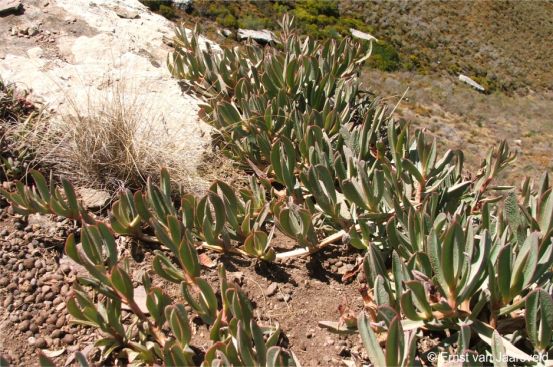
Fig. 4. The mountain sourfig in summer on the Rooiberg, Robertson, Western Cape.
Ecology
Ecology
The mountain sourfig grows wild in Succulent Karoo and dry Fynbos vegetation. It is confined to the mountainous regions in the Western Cape, growing on sandstone slopes. It is a trailing and mat-forming, long-lived perennial, rooting at the nodes. The succulent, bluish green leaves enable the plant to withstand periods of drought and heat. The leaves and young stems turns reddish to yellowish during the summer due to the betanin pigment which slows down photosynthesis and the glaucous nature reflects the sun rays. The flowers are produced on new growth towards the branch tips and are mainly pollinated by insects such as bees and monkey beetles. The purplish-pink colour is conspicuous, maximising visibility. Flowering time is in spring, the fruits develop during summer, ripening in January and February, and the seeds are dispersed by animals and humans. Unlike Carpobrotus deliciosus and C. quadrifidus, which are consumed fresh, the fruits of C. mellei, C. muirii, C. acinaciformis and C. edulis have a long shelf life and have to mature, and only then are they ready for consumption. The seeds, when compared to many other mesembs, are small and are embedded in the mucilage of the fruit, and when consumed and later excreted, they have been efficiently scarified and when landing in a sandy position, with the right conditions, will germinate within 3 weeks. Fruits are dispersed by Baboons and probably other mountain mammals. Plants also increase vegetatively, the branches (vegetative growth) rooting where they touch the soil, an efficient vegetative dispersal survival strategy on these nutrient-poor, sandy soils.
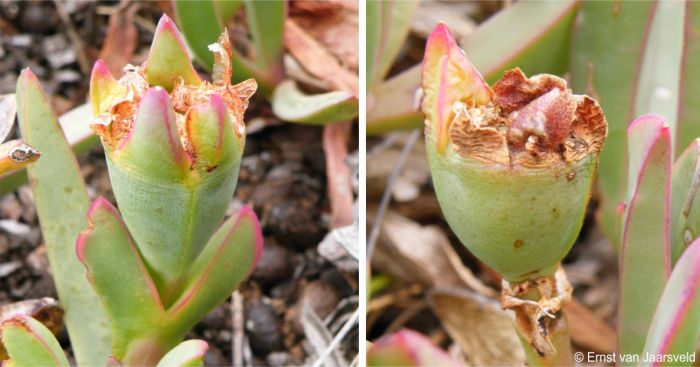
Fig. 5. The clavate fruit of Carpobrotus mellei on Gemsbokkop (left) and on Gannaberg (right).
Uses
Use
Carpobrotum mellei fruits are edible and collected annually in summer when mature, when they become wrinkled and brownish. Fruits have a long shelf life. When mature, they can be eaten or prepared as a jam. Carpobrotus mellei is used medicinally, interchangeably with other species of Carpobrotus and a 2006 study showed that it has antimicrobial properties. The leaf juice of sourfigs is used to treat mouth and throat infections, stomach problems and dysentery, as well as cuts, grazes, itches and sunburn. This is also an ornamental succulent plant and a useful sand-binding groundcover in mountainous fynbos gardens.

Fig. 6. Carpobrotus mellei growing in habitat on Hamansberg, between Robertson and Worcester, Western Cape, and a close-up of the stems and leaves.
Growing Carpobrotus mellei
Grow
Carpobrotus mellei is an attractive, easily grown, mat-forming succulent ornamental. It can be easily distinguished from the other 6 South African species by its bluish green leaves and pink flowers with long stigmas overtopping the stamens. It is best suited to Fynbos gardens, higher lying Succulent Karoo gardens as well as warm-temperate Mediterranean climate gardens (Van Jaarsveld 2010). Outside its habitat, it is best grown in containers under controlled conditions in a greenhouse. In temperate climates the plant can be moved out of doors for the summer period. The plant grows naturally on mineral-poor, acidic, sandstone soil. When grown in containers it is best to re-pot every second year. When the plant becomes untidy, refresh from cuttings.
Propagate from cuttings or seed. It is fairly fast-growing and should flower during its first season.
Propagate from stem cuttings at any time of the year but in spring, summer and autumn rooting is faster. Take cuttings of about 10–30 cm in length, remove the lower leaves and plant the stems to a depth of about 1-5 cm in a sandy soil mixture. Keep moist until well rooted. Rooting will take place within 3 weeks. As with the other species of Carpobrotus, the runners can be planted in-situ in its required position and kept moist until rooted.
Sow seed in autumn or winter in shallow trays in a sandy soil. Cover the seed with a thin layer of sand (1-2 mm) and keep moist. The Kirstenbosch seed primer (a smoke treatment) should enhance the germination process.
Plants grow well in a general succulent mixture, such as 2 parts sand, 1 part garden loam and 1 part peat or well broken down compost but good drainage is essential.
References
- Bolus, H.M.L. 1923. Novitates Africanae. Annals of the Bolus Herbarium 3: 123-139.
- Bolus, H.M.L. 1927. Novitates Africanae. Annals of the Bolus Herbarium 4: 72-109.
- Bolus, H.M.L. 1928. Mesembryanthemum and some allied genera Part 1. University of Cape Town, Bolus Herbarium.
- Bolus, H.M.L. 1929. Notes on Mesembryanthemum and allied genera. Part 2. University of Cape Town.
- Brown, N.E. 1925. Mesembryanthemum and some new genera separated from it. The Gardeners’ Chronicle 78: 433.
- Clarke, H. & Charters, M. 2016. The illustrated dictionary of southern African plant names. Flora & Fauna Publications Trust, Jacana, Johannesburg.
- Hartmann, H.E.K. 2001. Aizoaceae A-E. In Eggli, U. & Hartmann, H.E.K. (eds.) Handbook of Succulent Plants. Springer. Heidelberg, New York, etc.
- Mucina, L. & Rutherford, M.C. (eds) 2006. The vegetation of South Africa, Lesotho and Swaziland. Strelitzia 19. South African National Biodiversity Institute, Pretoria.
- Raimondo, D., Von Staden, L., Foden, W., Victor, J.E., Helme, N.A., Turner, R.C., Kamundi, D.A. & Manyama, P.A. (eds). in press. Red List of South African plants. Strelitzia 25. South African National Biodiversity Institute, Pretoria.
- Roberts, M. 1990. Indigenous healing plants. Southern Book Publishers, Halfway House, Johannesburg.
- Springfield, E.P. & Weitz, F. 2006. The scientific merit of Carpobrotus mellei L. based on antimicrobial activity and chemical profiling. African Journal of Biotechnology 5(13):1289-1293.
- Van Jaarsveld, E.J. 2010. Waterwise gardening in South Africa and Namibia. Struik, Cape Town.
- Van Jaarsveld, E.J. & Pienaar, U. de V. 2004. Die Mittagsblumen Südafrikas. Les Mésembs d'Afrique du Sud. Edition Eugen Ulmer, Stuttgart (German), Paris (French).
- Wisura, W. & Glen, H.F. 1993. The South African species of Carpobrotus (Mesembryanthema, Aizoaceae). Studies on the Mesembryanthema (Aizoaceae). Contributions of the Bolus Herbarium 15:67-107.
Credits
Ernst van Jaarsveld
Kirstenbosch National Botanical Garden (Retired)
Babylonstoren Farm (Current)
Extraordinary senior lecturer and researcher,
Department of Biodiversity and Conservation, University of the Western Cape
June 2024
Plant Attributes:
Plant Type: Ground Cover, Succulent
SA Distribution: Western Cape
Soil type: Sandy
Flowering season: Spring
PH: Acid
Flower colour: Pink
Aspect: Full Sun, Morning Sun (Semi Shade), Afternoon Sun (Semi Shade)
Gardening skill: Easy
Special Features:
Horticultural zones








Rate this article
Article well written and informative
Rate this plant
Is this an interesting plant?
Login to add your Comment
Back to topNot registered yet? Click here to register.